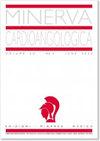Acute kidney injury and multivessel percutaneous coronary interventions in chronic renal disease: the AMICI study.
Q3 Medicine
引用次数: 0
Abstract
BACKGROUND Patients with chronic kidney disease (CKD) often have multivessel coronary artery disease and the risk of acute kidney injury (AKI) after percutaneous coronary interventions (PCI) is high. The aim of this study was to evaluate the risk of AKI in patients with CKD who underwent single vessel PCI versus multivessel PCI. METHODS We retrospectively screened all PCI performed from January 2011 to December 2017 and we included all the procedures performed in patients with a baseline glomerular filtration rate <60 ml/min/1.73 m2. PCI were divided in two groups according to the treatment of a single vessel (Mono Group) or multivessel PCI (Multi Group). The Multi Group was also divided in two subgroups according to the modality of PCI: multivessel PCI performed in one procedure (Multi-Single session Group) or in multiple staged procedures (Multi-Staged Group). RESULTS From a total of 4517 PCI screened, 848 PCI were included, 530 in the Mono Group and 318 in the Multi Group. The global rate of AKI was around 15% without significant differences between the Mono and the Multi Group (15.5% in the Mono and 14.8% in the Multi Group, p=0.786). In the Multi Group the risk of AKI was significantly higher in the Single session sub-group (21.4%) compared to the staged sub-group (11.2%, p= 0.014). CONCLUSIONS In patients with CKD, the risk of AKI did not differ in patients who underwent single vessel versus multivessel PCI, but multivessel PCI should be performed in multiple staged procedures rather than in a single session.慢性肾脏疾病的急性肾损伤和多血管经皮冠状动脉介入治疗:AMICI研究
背景:慢性肾脏疾病(CKD)患者通常有多支冠状动脉疾病,经皮冠状动脉介入治疗(PCI)后急性肾损伤(AKI)的风险很高。本研究的目的是评估CKD患者接受单支血管PCI与多支血管PCI的AKI风险。方法回顾性筛选2011年1月至2017年12月期间接受PCI治疗的所有患者,纳入肾小球滤过率基线<60 ml/min/1.73 m2的所有患者。根据单支PCI治疗(Mono组)和多支PCI治疗(Multi组)分为两组。根据PCI的方式,Multi组也分为两个亚组:在一个过程中进行多血管PCI (Multi- single session组)或在多个阶段的过程(Multi- stage组)。结果共筛选4517例PCI,纳入848例,单药组530例,多药组318例。全球AKI发生率约为15%,Mono组和Multi组之间无显著差异(Mono组为15.5%,Multi组为14.8%,p=0.786)。在多组中,单次治疗亚组发生AKI的风险(21.4%)明显高于分阶段治疗亚组(11.2%,p= 0.014)。结论:在CKD患者中,接受单支血管PCI与多支血管PCI的患者发生AKI的风险没有差异,但多支血管PCI应分多个阶段进行,而不是一次进行。
本文章由计算机程序翻译,如有差异,请以英文原文为准。
求助全文
约1分钟内获得全文
求助全文
来源期刊

Minerva cardioangiologica
CARDIAC & CARDIOVASCULAR SYSTEMS-
CiteScore
1.60
自引率
0.00%
发文量
0
审稿时长
>12 weeks
期刊介绍:
A Journal on Heart and Vascular Diseases.
 求助内容:
求助内容: 应助结果提醒方式:
应助结果提醒方式:


